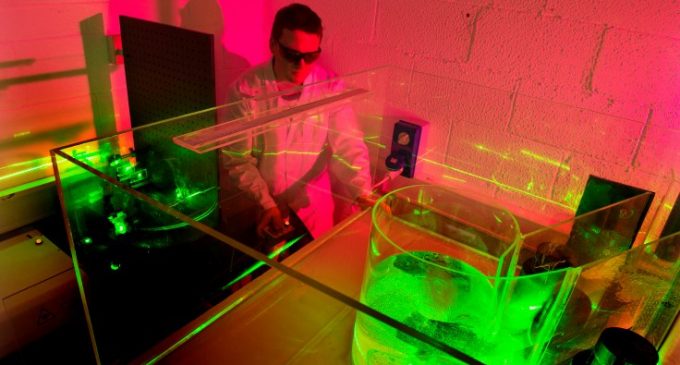Whirlpool Research Set to Change the Way We Build Rail, Flood and Sewerage Systems

Researchers from IT Sligo, together with colleagues from one of Switzerland’s leading universities, have made a discovery about how whirlpools function which has significant implications for how major infrastructural projects are approached and built including energy networks and flood defences around roads and railways. The study of whirlpool fluid flows discovered previously unknown features which are not predicted by established models and have implications for diverse fields ranging from hydroelectricity generation to understanding galactic dynamics in cosmology.
Already, the findings are being used to inform a number of major European projects that include mega-sewer tunnels
Vortex technology is also becoming an important form of small-scale hydroelectric power generation in isolated communities in developing countries, where access to a large-scale power grid might be impossible.
Members of the research team have traveled to Nepal where rural communities in the Himalayas are turning to vortex technologies to supply electricity to their communities.
There has been renewed interest in the study of whirlpools — or free-surface vortices — in recent years due to their relevance to diverse fields but a complete description of the turbulent three-dimensional structure of strong vortex flows has remained elusive.
The collaboration between the IT Sligo team and researchers from the Laboratoire de Constructions Hydrauliques (LCH) at the École Polytechnique Fédérale de Lausanne (EPFL) in Switzerland is working to change that.
The group’s findings, which broaden the understanding of a classic fluid mechanics problem, were recently published in the prestigious international scientific journal Nature Scientific Reports.
The current approach to these problems is to generate computer models of the flows. However, even using today’s high-end supercomputers, the results for vortex flows can be significantly inaccurate.
The IT Sligo team, which has since been joined by NUIG to further explore the ramifications of the findings, comprises of Dr Sean Mulligan, Mr John Casserly and Dr Richard Sherlock.
Last year, Dr Giovanni De Cesare, deputy director of LCH, brought a suite of sensors called 2D ultrasonic Doppler velocity profilers (UDP) to Sligo and mounted them on a free-surface vortex test rig in the Hydraulics Research Laboratory in IT Sligo. This was the first time these sensors had been used to monitor whirlpools and it enabled very detailed measurements of the complex flow patterns of a whirlpool to be noted.
The main, or primary, flow characteristics of free-surface vortices have previously been well studied, but during the group’s work subtle secondary flow patterns, or “twists” of turbulence, that were contrary to the established models were observed. The new measurements helped the researchers to develop an analogy to another classic flow system called Taylor-Couette flow.
“This newly discovered analogy has the potential to be a significant step forward in our understanding of turbulent flows in free-surface vortices and to provide insights into diverse areas of study ranging from civil engineering hydraulic structures to weather systems in the atmosphere and even extending to the details of how galaxies rotate around the black holes at their centres,” said Dr Richard Sherlock, a lecturer in Physics at IT Sligo.
Vortex flows are also central to many flood defence systems. Dr Sean Mulligan, who is currently a postdoctoral researcher leading an Enterprise Ireland commercialisation project at NUIG, and Dr De Cesare recently completed another collaborative study on an innovative groundwater transfer system developed for the Swiss firm BG Consulting Engineers for the CEVA rail project in Geneva. The aim was to find an alternative solution to traditional energy intensive pumping and consisted of putting in place a series of vortex siphons.
“We are involved in bridging the gap between the university and industry by developing diverse applications of vortex flows ranging from mega-sewer infrastructure projects to energy applications which can potentially help boost exports and employment here in Ireland,” Dr Mulligan said.
CAPTION:
The picture shows Sean Mulligan at work in the Hydraulics Research lab in IT Sligo. The “glass box” is the vortex physical model and the researcher can produce a range of different geometries by placing different inserts in the middle of the model.







